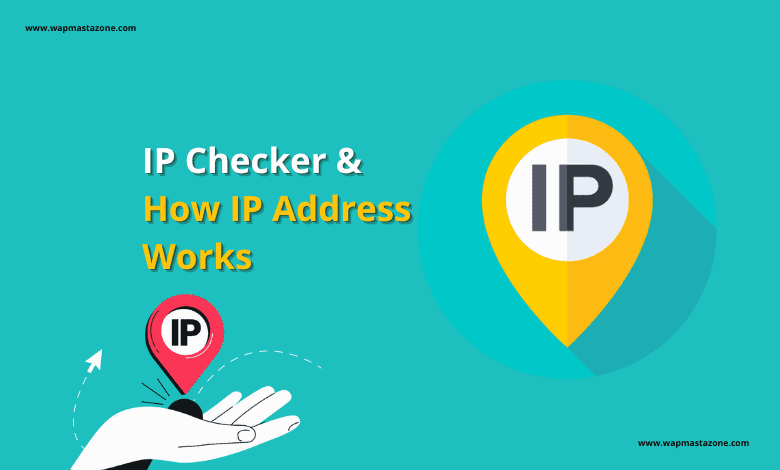
What is an IP Checker? ip checker is a free online tool for checking IP addresses. One of the most important aspects of the internet is the ability to communicate with other devices around the world. This communication is made possible through the use of Internet Protocol (IP)addresses.
What is IP?
IP stands for Internet Protocol. It is a protocol used for communication between devices on a network. The IP protocol is responsible for routing data packets between devices on the internet. It is the foundation of the internet and enables communication between devices all over the world.
The IP protocol is responsible for sending packets of data from one device to another. When a device wants to send data to another device, it breaks the data into packets and adds the destination IP address to each packet. The packets are then sent to the network, which uses the IP protocol to route the packets to their destination.
What is an IP Address?
An IP address is a unique identifier assigned to a device on a network. It is used to identify the device and route data packets to it. An IP address consists of four sets of numbers separated by dots, such as 192.168.0.1. Each set of numbers can range from 0 to 255.
There are two types of IP addresses: IPv4 and IPv6. IPv4 addresses are 32-bit addresses and are the most commonly used type of IP address. IPv6 addresses are 128-bit addresses and are used to address the shortage of IPv4 addresses.
Suggested read: What is My IP Address? – IP FAQ
What is IP Checker?
An IP checker is a tool used to check the IP address of a device. There are many different types of IP checkers available online, including websites, browser extensions, and mobile apps. IP checkers can provide information about the IP address, such as the type of IP address, the geographical location, and whether the IP address is associated with any malicious activity.
Free IP Address Checker – ipchecker
How IP Address Work
When a device connects to the internet, it is assigned an IP address by the network. The IP address is used to identify the device and route data packets to it. When a device sends data over the internet, it breaks the data into packets and adds the destination IP address to each packet. The packets are then sent to the network, which uses the IP address to route the packets to their destination.
It serves two primary functions:
- Identifying Devices: An IP address identifies a specific device or host on a network. It works similar to a street address, helping routers and other networking devices route data packets to the correct destination.
- Enabling Communication: IP addresses enable devices to communicate with each other over the internet or within a local network. When one device wants to send data to another, it uses the destination device’s IP address to establish a connection.
Below is a more detailed explanation of how IP addresses work:
- IP Address Formats: IP addresses come in two versions: IPv4 (Internet Protocol version 4) and IPv6 (Internet Protocol version 6). IPv4 addresses consist of four sets of numbers separated by dots (e.g., 192.168.0.1), while IPv6 addresses are longer and written in hexadecimal format (e.g., 2001:0db8:85a3:0000:0000:8a2e:0370:7334).
- Public vs. Private IP Addresses: Public IP addresses are assigned by Internet Service Providers (ISPs) to devices connected directly to the internet. These are globally unique and allow devices to communicate across the internet. On the other hand, private IP addresses are used within local networks (e.g., home or office networks) to identify devices connected to the same local network. Private IP addresses are not accessible from the internet directly.
- Dynamic and Static IP Addresses: IP addresses can be either dynamic or static. Dynamic IP addresses are assigned to devices temporarily by the DHCP (Dynamic Host Configuration Protocol) server and may change over time or after each reboot. Static IP addresses, on the other hand, remain fixed and are manually assigned to devices, ensuring consistent identification.
- IP Address Allocation: The allocation of IP addresses is managed by regional Internet registries and other authorities to prevent duplication. Internet Service Providers (ISPs) receive blocks of IP addresses and then allocate them to their customers and devices.
- Routing: When a device wants to send data to another device, it packages the data into data packets and includes the destination device’s IP address in the packet header. Routers on the network examine the destination IP address and determine the most efficient path to forward the packet to reach its destination.
What is the Importance of IP Addresses
IP addresses are essential for communication between devices on the internet. They enable devices to identify each other and route data packets to their destination. Without IP addresses, communication on the internet would be impossible.
IP addresses are also used for security purposes. By tracking IP addresses, it is possible to identify the source of a cyber attack or other malicious activity. IP addresses can also be used to block access to websites or services from specific IP addresses.
Also read: Ways to Change and Hide Computer IP Address
Dynamic vs. Static IP Addresses
There are two types of IP addresses: dynamic and static. A dynamic IP address is assigned to a device by the network and changes over time. This type of IP address is commonly used by residential internet service providers. A static IP address is a fixed IP address that is assigned to a device and does not change over time. This type of IP address is commonly used by businesses and organizations.
Suggested read: What is my IP Address – IP FAQs
Public vs. Private IP Addresses
Public IP addresses are assigned to devices that are accessible from the internet. They are unique and can be accessed by anyone on the internet. Private IP addresses are assigned to devices that are not accessible from the internet. They are used to identify devices on a local network and are not unique.
What is IP Spoofing?
IP spoofing is a technique used to impersonate another device by changing the source IP address of a data packet. This technique is commonly used by cybercriminals to launch cyber attacks. By spoofing an IP address, the attacker can hide their true identity and make it appear as if the attack is coming from a different device.
Also read: What is DNS Checker & Global DNS Propagation
What is IP Geolocation?
IP geolocation is the process of determining the geographical location of a device based on its IP address. This information can be used for various purposes, such as targeted advertising, fraud detection, and security purposes.
Also read: What is VPN?
What is IP Blocking?
IP blocking is the process of preventing access to a website or service from a specific IP address or range of IP addresses. This technique is commonly used to block access from known malicious IP addresses or to prevent unwanted traffic from certain regions or countries.
Also read: Difference between IPv4 and IPv6



